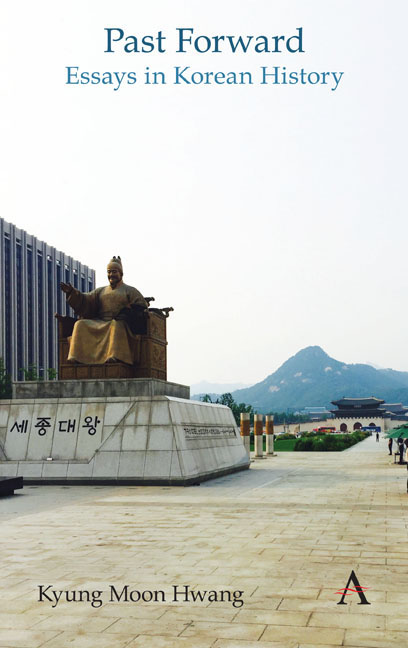Book contents
- Frontmatter
- Contents
- List of Figures
- Foreword
- Chronologies of Korean History
- Themes
- Acknowledgments
- Note on Romanization and Spelling
- Part I Circulating History
- Part II Durable Traditions
- Part III Ancient Remains
- Part IV Dynastic Depths
- Part V Modern Origins
- Part VI Challenges of Nationhood
- Part VII History Makers
- Part VIII External Presences
- 52 Korea's Complicated Relationship with China
- 53 How Chinese was Chinese History?
- 54 Tiananmen and the Power of History
- 55 Lotte between Korea and Japan
- 56 Comfort Women Beholden to History
- 57 A Modest Proposal for Dokdo
- 58 The General Sherman Incident of 1866
- 59 Depictions of the United States
- 60 Overcoming Old Views of Korea–United States Ties
- 61 Foreign Language Dependency
- Part IX Trials of Modernization
- Part X Gripped by the Past
- Index
54 - Tiananmen and the Power of History
from Part VIII - External Presences
- Frontmatter
- Contents
- List of Figures
- Foreword
- Chronologies of Korean History
- Themes
- Acknowledgments
- Note on Romanization and Spelling
- Part I Circulating History
- Part II Durable Traditions
- Part III Ancient Remains
- Part IV Dynastic Depths
- Part V Modern Origins
- Part VI Challenges of Nationhood
- Part VII History Makers
- Part VIII External Presences
- 52 Korea's Complicated Relationship with China
- 53 How Chinese was Chinese History?
- 54 Tiananmen and the Power of History
- 55 Lotte between Korea and Japan
- 56 Comfort Women Beholden to History
- 57 A Modest Proposal for Dokdo
- 58 The General Sherman Incident of 1866
- 59 Depictions of the United States
- 60 Overcoming Old Views of Korea–United States Ties
- 61 Foreign Language Dependency
- Part IX Trials of Modernization
- Part X Gripped by the Past
- Index
Summary
Three decades after the 1989 Tiananmen Square massacre of hundreds, perhaps thousands, of pro-democracy protesters in China's capital city, the citizens of China today remain forbidden from even mentioning this event. Courageous people in Hong Kong over the years have persisted in observing this anniversary, but they, too, are feeling increasing pressure from the authoritarian Chinese state. In an extraordinary violation of minimal global standards, Hong Kong publishers and journalists have even been kidnapped by mainland Chinese agents, including in foreign countries, for exercising their rights to free expression.
Why is the Chinese government so afraid? It has a lot to do with the power of history, and here we find some striking comparisons to what has happened in Korea, in both North and South, as well as in the East Asian region as a whole. The visit in 2016, for example, by US President Barack Obama to Hiroshima, the site of the first atomic bombing in August 1945, highlighted the major stakes of historical memory. Japanese Prime Minister Abe Shinzo used Obama's visit to reinforce Japan's victimhood, even as some of his own citizens condemned his ongoing attempts to recast history to minimize the impact of Japanese militarism in World War II. Abe, the grandson of a member of the warmongering cabinet of Tojo Hideki during the war, was pursuing an agenda of rewriting the postwar pacifist Japanese constitution through appeals to a skewed nationalist understanding of history.
The Chinese government's official response to the Obama visit, naturally, was to deploy the nationalism card and issue reminders of Japan's barbarous “Rape of Nanjing” in 1937. But the ruling Chinese Communist Party has itself manipulated and concealed history even more blatantly. The main problem is what to do with Mao Zedong, the founder of the party, the leader of mainland China from 1949 to his death in 1976, and the perpetrator of state actions that killed tens of millions of innocent Chinese people. While some terrible aspects of Mao's Cultural Revolution of 1966–1976 have been officially recognized, acknowledgment of the human cost of this insanity and of the Great Leap Forward in the late 1950s has been stifled.
- Type
- Chapter
- Information
- Past ForwardEssays in Korean History, pp. 159 - 160Publisher: Anthem PressPrint publication year: 2019

